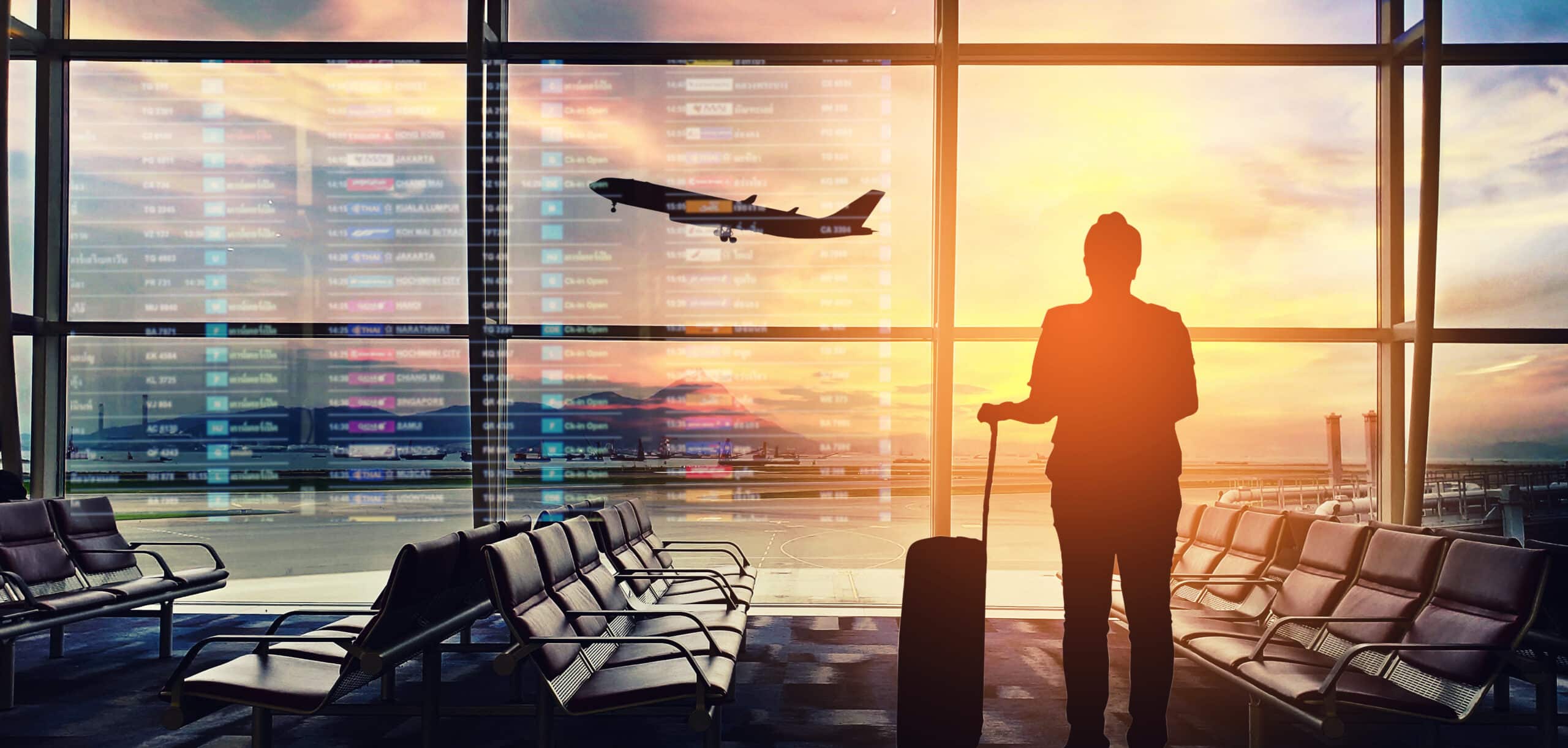Estimated reading time: 8 minutes
In today’s global business environment, traveling has become indispensable to corporate operations. However, with the increasing complexities of international travel, ensuring the safety of business travelers has never been more critical. The risks are manifold, from geopolitical tensions and health crises to cyber threats and natural disasters. Therefore, organizations must adopt comprehensive and strategic approaches to safeguard their personnel. This article delves into five essential tips for safe business travel, providing a guide to confidently navigating the multifaceted landscape of international security.
Table of contents
- Pre-travel risk assessments: Understanding and preparing for the risks of your destination
- Secure transportation services: Ensuring safe passage from airports to accommodations and meetings
- Emergency response planning: Having a clear, actionable plan in case of unexpected incidents
- Cultural and legal awareness training: Preparing travelers for the nuances of their destinations
- Personal security detail for high-risk regions: Offering expert protection in areas with heightened security concerns
- Conclusion
Pre-travel risk assessments: Understanding and preparing for the risks of your destination
Identifying Potential Threats
Before embarking on any business trip, conducting a thorough risk assessment of the destination is crucial. This process involves analyzing various factors, including political stability, crime rates, health concerns, and environmental hazards. By identifying potential threats, travelers and their employers can make informed decisions about the necessity of the trip and the precautions that need to be taken. Moreover, understanding the specific risks of a destination enables travelers to stay alert to relevant dangers, enhancing their overall security during the trip.
Customizing Risk Mitigation Strategies
Once the potential risks have been identified, the next step is to develop tailored risk mitigation strategies. This may involve adjusting travel itineraries to avoid high-risk areas, scheduling travel during safer times, or canceling the trip if the benefits outweigh. Additionally, organizations can provide travelers with safety tools and resources, such as emergency contacts, location-based alerts, and access to secure communication channels. Customized risk mitigation prepares travelers for challenges and demonstrates an organization’s commitment to their well-being.
Pre-Travel Briefings and Training
To further enhance the safety of business travelers, pre-travel briefings and training are essential. These sessions should cover the identified risks of the destination, practical advice on staying safe, and procedures for emergencies. Travelers should be educated on how to minimize their exposure to threats and how to respond if they find themselves in a dangerous situation. Additionally, these briefings can include information on cultural norms and etiquette to avoid inadvertently offending local sensibilities, which can also pose a risk to personal safety. Pre-travel education empowers travelers with the knowledge and skills to navigate the complexities of international travel securely.
Secure transportation services: Ensuring safe passage from airports to accommodations and meetings
Selecting Vetted Transportation Providers
Choosing an exemplary transportation service is a cornerstone of travel security, especially in unfamiliar or high-risk areas. Secure transportation services go beyond mere convenience; they ensure that travelers are in the hands of vetted, reliable drivers and vehicles that meet high safety standards. Companies should prioritize providers that conduct thorough background checks on their drivers, maintain a modern, well-maintained fleet, and have a robust understanding of the local geography and security landscape. By selecting vetted transportation services, businesses significantly reduce the risk of road accidents, theft, and other security incidents.
Implementing Real-time Monitoring and Communication
In addition to selecting the right provider, implementing real-time monitoring and communication capabilities is vital for secure transportation. This means tracking the traveler’s location from when they leave the airport to their arrival at the hotel or meeting place. Such measures provide peace of mind to the traveler and their organization and allow for swift action should an unexpected incident occur. Secure communication channels are equally important, enabling travelers to stay in touch with their company’s security team and local support services throughout their journey.
Preparing for Contingency and Evacuation Scenarios
While preventive measures are essential, the ability to respond effectively to emergencies is equally crucial. Secure transportation services should include contingency planning for various scenarios, such as medical emergencies, natural disasters, or political unrest. This could involve planning alternate routes, access to safe havens, and arrangements for emergency evacuation if necessary. By preparing for the worst-case scenarios, travelers and their employers can ensure that they are caught on guard and respond in a coordinated and effective manner to safeguard the traveler’s well-being.
Emergency response planning: Having a clear, actionable plan in case of unexpected incidents
Developing Comprehensive Emergency Plans
A well-crafted emergency response plan is the backbone of any travel security strategy. Such plans should be comprehensive, covering a range of potential scenarios, from minor medical issues to significant security incidents. Each plan must detail specific actions, individuals to contact, and available resources. Importantly, these plans should be tailored to the traveler’s destination, considering local resources, laws, and cultural factors. A clear, actionable plan prepares travelers for how to react in an emergency and ensures that they can do so quickly and efficiently, minimizing risks to their safety.
Training and Drills for Travelers
Knowledge of emergency procedures is crucial, but the ability to implement them under pressure safeguards a traveler’s security. Regular training sessions and drills for travelers can bridge this gap. These exercises should simulate various situations, from evacuating a hotel during a fire to responding to a medical emergency. Such practical experience instills confidence and helps travelers react more effectively in real-life scenarios. Additionally, these drills reinforce the importance of security measures and ensure that emergency protocols are second nature to those on the move.
Coordination with Local Emergency Services
Effective emergency response requires seamless coordination with local emergency services. Before travel, organizations should establish contacts with local law enforcement, medical facilities, and emergency response teams. This preparation ensures that the traveler has immediate access to professional assistance during an incident. Furthermore, understanding the capabilities and limitations of local services allows companies to supplement gaps with additional support, such as private security details or medical evacuation services. Effective collaboration with local authorities enhances the traveler’s security and ensures a swift and coordinated response to any emergency.
Cultural and legal awareness training: Preparing travelers for the nuances of their destinations
Understanding Local Customs and Etiquette
Traveling for business often involves navigating the complex landscape of international cultures and practices. Cultural and legal awareness training is crucial for preparing travelers to interact respectfully and effectively in diverse environments. Such training covers essential aspects of local customs, communication styles, and social etiquette, helping travelers avoid misunderstandings or offenses that could jeopardize business relationships or personal safety. Understanding the nuances of their destination’s culture allows travelers to foster positive interactions and demonstrate respect for local traditions and norms, which is invaluable in building trust and rapport.
Navigating Legal Differences and Compliance
Legal systems vary widely worldwide, with significant differences in laws and regulations that can impact business travelers. Therefore, cultural and legal awareness training must include comprehensive information on relevant legal issues, such as visa requirements, restrictions on technology use, and local laws on conduct. Awareness of these legal aspects ensures that travelers comply with local regulations and safeguard their personal and professional interests while abroad. This aspect of training is particularly critical in regions with stringent laws on speech, behavior, or dress, where unwitting violations can lead to serious legal consequences.
Scenario-based Learning for Practical Application
Scenario-based learning can be a powerful tool for effectively preparing travelers for cultural and legal challenges. This approach involves presenting travelers with realistic scenarios they might encounter, ranging from negotiating business deals to socializing in a professional context. Through role-play and discussion, travelers can practice appropriate responses and decision-making processes, enhancing their ability to navigate complex cultural landscapes. Scenario-based learning not only reinforces theoretical knowledge but also provides a safe space for travelers to explore different strategies for overcoming potential barriers, ensuring they are well equipped to manage the subtleties of international travel.
Personal security detail for high-risk regions: Offering expert protection in areas with heightened security concerns
Assessing the Need for Personal Security Details
In regions where security risks are significantly higher, the deployment of personal security details (PSDs) can be a critical measure to ensure the safety of business travelers. The decision to employ PSDs should be based on a comprehensive risk assessment, considering factors such as the traveler’s profile, the nature of the business being conducted, and the current security climate of the destination. PSDs, comprised of experienced security professionals, offer a high level of protection against various threats, including physical attacks, kidnapping, and espionage. Organizations can ensure their personnel are adequately protected in the most challenging environments by assessing the need for such specialized security measures.
Customizing Security Protocols to the Individual
The effectiveness of a personal security detail lies in its ability to tailor its protocols and procedures to the specific needs and circumstances of the individual traveler. This customization process involves a detailed understanding of the traveler’s itinerary, preferences, and the nature of their work. Security teams meticulously plan routes, conduct advance visits to locations, and establish secure communication channels while maintaining a low profile to avoid drawing unnecessary attention. Customizing security protocols ensures that protective measures are efficient and minimally intrusive, allowing business activities to proceed as smoothly as possible without compromising safety.
Integration with Local Security Infrastructure
For a personal security detail to function optimally, it must be effectively integrated with the local security infrastructure. This involves coordination with local law enforcement agencies, security services, and emergency responders to ensure a unified approach to the traveler’s safety. Such collaboration allows for sharing intelligence, additional support in case of an incident, and smoother navigation through security checkpoints and controlled areas. Integration with local security forces enhances the overall effectiveness of the PSD by leveraging local knowledge and resources, ensuring the highest level of protection for travelers in high-risk regions.
Conclusion
In conclusion, the intricacies of modern business travel necessitate a multifaceted approach to security, particularly when navigating the potential hazards of international destinations. Implementing pre-travel risk assessments, secure transportation services, emergency response planning, cultural and legal awareness training, and personal security details in high-risk areas forms a robust foundation for safeguarding business travelers. These strategies not only mitigate risks but also ensure that organizations can pursue their global objectives without compromising the safety and well-being of their employees. Adapting to evolving global conditions and continuously refining security measures are essential for staying ahead of potential threats. Ultimately, prioritizing the security of business travelers reflects an organization’s commitment to its people and its success in the global marketplace.












